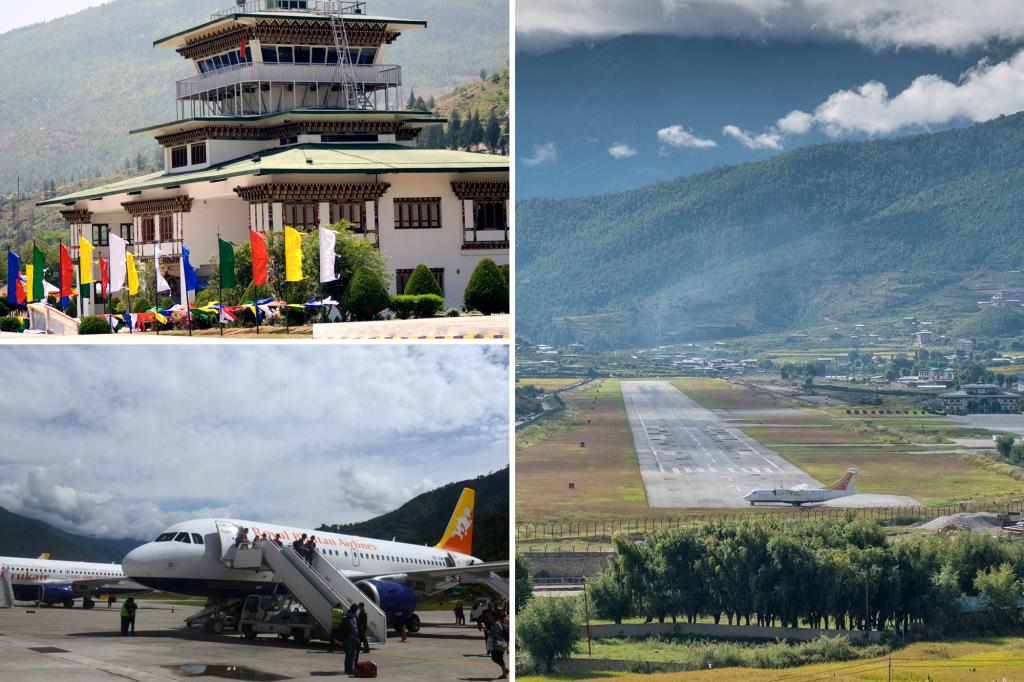At Paro International Airport in Bhutan, pilots face a challenging landing due to the airstrip being situated between 18,000-foot mountain peaks and residential areas. Only 50 pilots worldwide have been deemed qualified to handle the difficult landing at this airport. The smaller craft-only landing strip requires pilots to have special training and the ability to land without the assistance of radar to avoid the risk of crashing into nearby houses, making it necessary for pilots to have local skills and knowledge of the area.
Captain Chimi Dorji of Druk Air, a local carrier, stated that landing in Paro is challenging due to the skill required by pilots, but not necessarily dangerous. In Bhutan, where 97% of the land is mountainous, the thinner air at high altitudes affects the speed at which aircraft move. The weather is another factor that pilots need to consider when landing in Paro, with afternoon thermal winds and monsoon season presenting additional challenges. Special considerations and precautions need to be taken during the monsoon season, where heavy rains and hail can occur.
Due to the challenging terrain and weather conditions, night flights are not allowed at Paro International Airport. Pilots must navigate carefully to avoid crashing into the surrounding mountains, which are described as “obstacles” by Captain Dorji. Despite the difficulties, pilots who are Category C qualified get the chance to showcase their skills at this treacherous landing strip, often feeling like Maverick from “Top Gun” as they successfully land in Paro. With proper training and an understanding of the local area, pilots can safely navigate the demanding conditions at this unique airport.
In Bhutan, the fast-moving airspeed caused by thinner air at high altitudes adds to the complexity of landing at Paro International Airport. Pilots must be prepared to adjust their approach accordingly to account for the differences in airspeed as opposed to ground speed. By mastering the necessary skills and techniques for landing in Paro, pilots demonstrate their area competence and ability to handle the challenges posed by the airport’s location. Despite the intense training required and the risks involved, the pilots who successfully land at Paro International Airport receive praise from passengers for their skill and expertise in navigating the treacherous airstrip.
In addition to the pilot’s skills, the weather plays a significant role in the challenges faced at Paro International Airport. Pilots must carefully monitor weather conditions, particularly during monsoon season, to ensure safe landings. The presence of thermal winds and rain in the afternoons can create turbulent conditions for landing, making it necessary for pilots to plan their flights accordingly. Despite the potential hazards and obstacles, pilots at Paro International Airport continue to demonstrate their expertise and proficiency in handling the unique conditions of the airstrip, proving their ability to land safely in one of the world’s most challenging airports.


